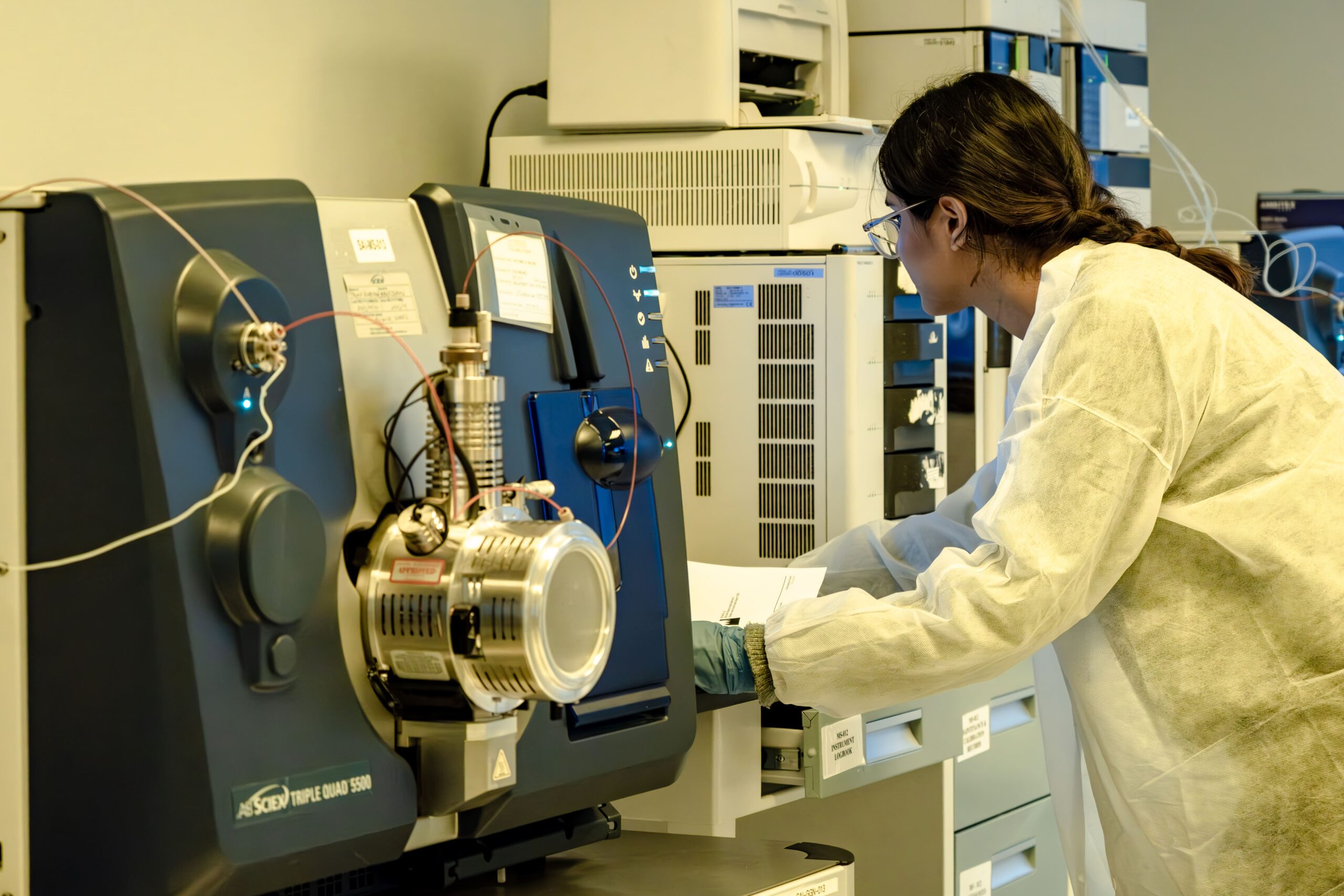Sannova
A 2019 review article in the Journal of Pharmaceutical Analysis points out that protocols for peptide bioanalysis must not only be specific, multiplexing, and high-throughput, they must also minimize undesirable matrix interference effects (Pinho et al.). In fact, the authors describe the process of developing and optimizing techniques that overcome matrix interference effects as “burdensome” (Pinho et al., 2019). This generalization arises from the researchers’ comparison of ligand-binding and mass spectrometric methods for quantification of the synthetic GLP-1 receptor agonist, exenatide, in biological and biotechnology-based formulation matrices.

Standard techniques in peptide bioanalysis include ligand-binding assays, such as the enzyme-linked immunosorbent assay (ELISA), high pressure liquid chromatography (HPLC) and mass spectrometry (MS).
It is well known that plasma, saliva, urine and other biological matrices increase or decrease responses to analytes in ligand-binding and mass spectrometric assays. In theory, using matrix-matched standards or blanks (identical to the sample, except for any endogenous interference) would produce the most reliable data. In practice, it is difficult to create appropriate standards or to prevent matrix interference in assays used for therapeutic peptide quantitation.
To address these challenges, bioanalysts at Sannova can assist sponsors by developing protocols and implementing quality assurance practices that mitigate matrix effects to optimize accuracy, precision, sensitivity, and selectivity in the preclinical and clinical assessment of peptides.
Though the ELISA has been regarded as a sensitive and high-throughput method for quantification of peptides, its drawbacks include potential cross-reactivity with compounds of similar structure, selectivity issues related to discriminating between a peptide and its analogs or metabolites, as well as limited multiplexing capability. In addition, matrix endogenous interferences do compromise the sensitivity, selectivity, and accuracy of an ELISA. To reduce matrix effects, sample pretreatment, solvent modification, or changes to other parameters of the ELISA may be pursued. However, as exemplified in the case of exenatide bioanalysis, combined liquid chromatography-mass spectrometry (LC-MS) methods have proven to be superior to ELISA in attaining accurate and reliable results, even in the presence of matrix endogenous interferences (Pinho et al., 2019).
Even though LC is the technique of choice in peptide quantitation, appropriate pretreatment procedures consisting of dilution, protein precipitation, or solid-phase extraction must be applied to minimize matrix effects and reduce ion suppression (especially desirable if coupled with mass spectrometry). It is important to note that while protein precipitation eliminates endogenous interferences associated with blood, plasma, urine, or milk proteins, there is a risk that the analyte will be precipitate out with those endogenous proteins. Care must also be taken to anticipate and monitor the effect of trypsin digestion on peptide fragmentation – to prevent peptides with similar weights from converging in the mass spectra. Nevertheless, liquid chromatography (LC) is the standard technique for quantitative assessment of high molecular weight drugs like exenatide; and the use of LC for lower molecular weight proteomic targets is expanding (Pinho et al., 2019).
Mass spectrometry, used in conjunction with liquid chromatography, has been described as the gold standard method for detection and quantitative analysis of peptides. Though some tandem LC-MS quadrupole systems can be used to simultaneously separate and detect peptides like exenatide in complex matrices (Pinho et al., 2019), high resolution mass spectrometry (HRMS) has advantages over triple quadrupole systems for peptide quantitation. HRMS can be operated in various modes to optimally leverage its sensitivity, high throughput, and multiplexing abilities, against its ability to discriminate between the desired peptide and matrix interferences. In addition, HRMS, unlike ELISA, can distinguish between modifications in a peptide – allowing the quantification of bound and free forms (Pinho et al., 2019).
Currently, mass spectrometric methods have clear advantages over ligand-based methods in sensitivity, specificity, multiplexing, high-throughput, and reliability in the presence of endogenous interference. Ligand-binding assays are particularly susceptible to matrix effects, but sample pretreatment can minimize interference. Though liquid chromatography is routinely used for peptide quantitation, pretreatments involving peptide precipitation or cleavage have to be undertaken carefully – to avoid loss of analyte or convergence of peptide fragments. Accurate and reliable quantitation of peptides depends on bioanalytic methods and practices that are robust to the presence of matrix interference effects.
As pharmaceuticals advance through the pipeline of preclinical and clinical trials, the time and cost of studies increases. At the same time, sponsors face practical constraints set by limited amounts of biological material available for inferring the safety, toxicity, and pharmacodynamic/pharmacokinetic profile of their lead compounds. By developing optimized protocols and practices to mitigate matrix interference effects that affect peptide quantitation, bioanalysts play an important role in securing the high quality and reliability of data obtained from preclinical and clinical trials. In the pharmaceutical industry, this level of quality and reliability is critical to supporting subsequent decisions – yielding greater safety, efficiency, and cost-savings in the long-run.
Reference
Pinho, A. R.; Fortuna, A.; Falcão, A.; Santos, A. C.; Seiça, R.; Estevens, C.; Veiga, F.; Ribeiro, A. J. Comparison of ELISA and HPLC-MS methods for the determination of exenatide in biological and biotechnology-based formulation matrices. J Pharm Anal. [Online] 2019, 9, 143-155. doi:10.1016/j.jpha.2019.02.001 (accessed July 28, 2021).